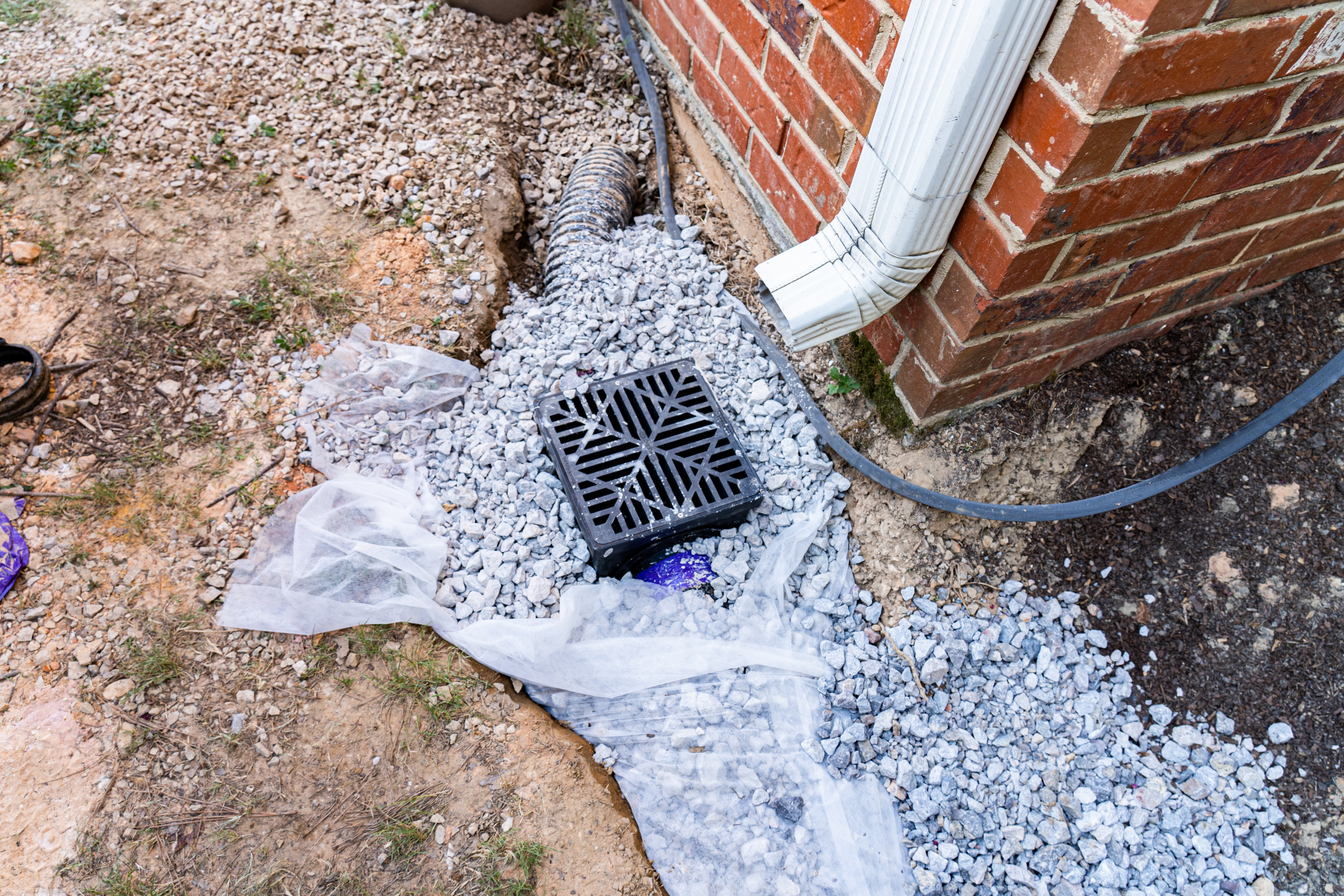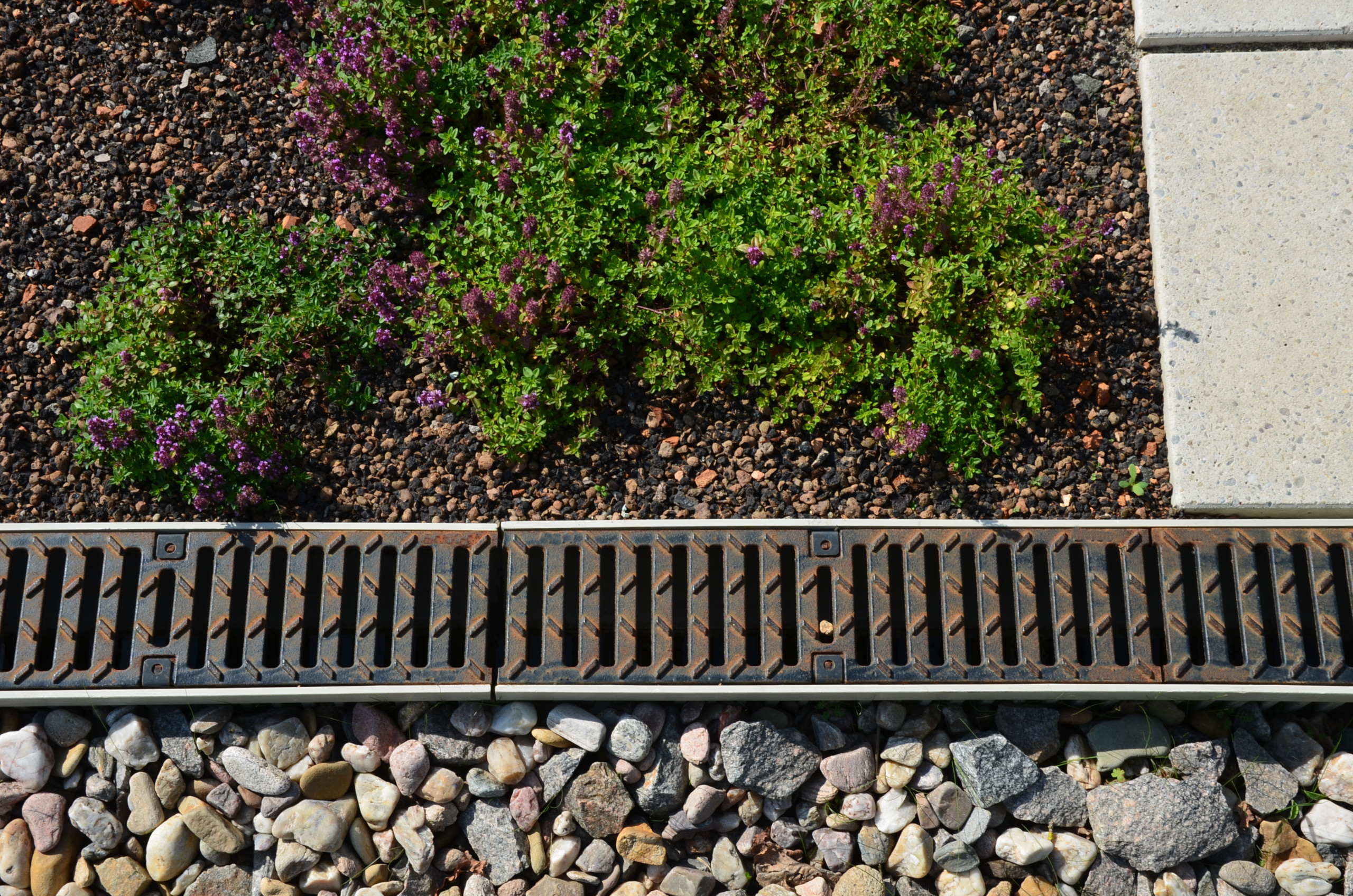by Luke Cronin
Share
by Luke Cronin
Share

Foundation drainage is a crucial aspect of home construction and maintenance. Proper drainage ensures that your home stays dry and stable, preventing costly repairs down the line. In this guide, we’ll explore foundation drainage systems, best practices, and practical tips to keep your home safe and strong.
Understanding Foundation Drainage
Think of foundation drainage as the hidden champion of your home’s structural integrity. It’s the behind-the-scenes system that quietly keeps things dry and stable. So, what exactly is it? Simply put, foundation drainage involves a network of strategies to steer water away from your home’s base. You might not see it working, but trust me, it’s doing some heavy lifting.
Why is this important? Imagine water seeping into your foundation. Not good, right? Left unchecked, it can lead to all sorts of headaches like structural damage—think of those ominous wall cracks—and water woes like a perpetually damp basement. Bottom line: effective drainage is your first line of defense against these issues, saving you from costly repairs and a lot of stress down the road. Plus, a dry home is a happy home, wouldn’t you agree?
Recognizing Foundation Drainage Problems
Spotting drainage issues early can save you a lot of trouble—and money—down the line. Here are some critical red flags to look for:
Warning Signs of Foundation Drainage Issues
- Damp or Wet Basement:
-
- A basement that always feels damp or frequently gets wet after rain is a major clue something’s off. Water should not be finding its way in.
- Cracks in Walls or Floors:
-
- Keep an eye out for cracks in the foundation walls or floors. They might start small, but over time, they can widen and lead to serious structural problems.
- Water Pooling Near the Foundation:
-
- If you notice puddles or water collecting around your home’s base, it’s a telltale sign of poor drainage. Water should be flowing away, not hanging around.
Foundation Drainage Quick Assessment
- Walk Around the Exterior:
- After a good rain, take a quick walk around your house. If you see standing water near your foundation, it’s a clear indicator you need to address drainage.
- Check the Basement:
- Regularly inspect your basement for dampness, leaks, or mold. These are symptoms of water intrusion from faulty drainage.
- Inspect Downspouts and Gutters:
- Ensure they’re moving water away from your house. Anything closer than a couple of feet could lead to problems.
By catching these signs early and reviewing posts like Flood Structural Damage: How to Spot and Fix Key Issues, you can take steps to fix things before they become expensive nightmares. And if water has already gotten in, here’s how to spot and fix flood-related structural damage before it escalates.
Foundation drainage systems are the real MVPs in keeping your home dry and stable. They efficiently manage and redirect water, protecting your foundation from the potential havoc caused by moisture build-up. Here’s a no-nonsense look at three essential components every homeowner should consider.
- French Drains: These are perhaps the most commonly used systems for diverting water away from foundations. Picture a shallow trench lined with gravel that houses a perforated pipe. As water seeps through the soil, it enters the pipe through these perforations and is safely guided away from your foundation. French drains are particularly effective in areas with consistent water flow and are fairly straightforward to install.
- Sump Pumps: Ever had to bail out a flooded basement? A sump pump is your best defense against this nightmare. Installed in a pit at the lowest point of your basement, it collects water that’s found its way in and physically pumps it out and away. Especially useful in homes prone to flooding, sump pumps offer peace of mind, as they actively prevent water from overstaying its welcome.
- Gutters and Downspouts: Though not always considered part of foundation drainage, they play a critical role. By directing rainwater off your roof and safely away from the house, gutters and downspouts prevent pooling near your foundation. This setup is essential, even for homes not immediately worried about basement flooding, as mismanaged roof runoff can slowly erode the integrity of your foundation over time.

Each of these systems addresses a specific kind of water management challenge, but together, they create a robust defense against water damage. Keep them in top shape, and you’ll dodge the costly repairs that follow neglected drainage issues.
Best Practices for Foundation Drainage
Achieving optimal foundation drainage requires a blend of vigilance and smart planning. Here’s how to effectively manage it:
How Can I Improve Drainage Around My Foundation?
- Grading: Ensure the ground slopes away from your house to direct water away from the foundation. While it might seem low-tech, it’s highly effective.
- Gutters and Downspouts: Regularly check for clogs or improper angles that could cause water to accumulate near your foundation.
- Landscaping and Material Choice: Use gravel, native plants, and permeable surfaces. For more practical ideas, check out this guide on Drainage Around Foundation: 5 Essential Improvements.
What is the Best Practice for Foundation Drainage?
- Consistent Checks and Maintenance:
-
- Schedule regular inspections, particularly after heavy rain, to identify any issues early.
- Holistic Approach:
-
- French Drains: These help redirect water away from the foundation.
- Sump Pumps: Essential for moving water efficiently.
- Waterproof Coatings: Provide a seal to protect against water intrusion.
By integrating these practices into your home maintenance routine, you ensure not only protection from water damage but also enhance your peace of mind. Rain or shine, your foundation will stand resilient.
What is the Best Drainage Around the Foundation of a House?
When it comes to choosing the best drainage for your home’s foundation, it all starts with smart planning and some basic ground rules. First, grading is key. You want the land surrounding your house to slope away, not towards the foundation. This simple action ensures water naturally flows away and doesn’t pool around your home’s base, reducing risks of seepage and structural damage.
Next up, think about using gravel and vegetation strategically. Gravel can be your best friend, as it promotes efficient water dispersion and prevents soil erosion. Adding a layer of gravel along the foundation can act as a natural barrier against water accumulation.

Also, be deliberate in your choice of landscape materials. Permeable paving options, such as bricks and stones with gaps, allow water to pass through rather than collect on top. This not only aids in drainage but also reduces surface runoff. By combining smart grading, gravel, and the right plants and materials, you create a multi-layered approach to keep your foundation dry and secure.
Does Gravel Around Foundation Help Drainage?
Using gravel around your foundation isn’t just a landscaping choice—it’s a simple, functional way to enhance drainage. Gravel allows water to flow through more easily than standard soil, reducing the risk of pooling and helping direct water away from your home’s foundation. This can prevent erosion, a key enemy to structural integrity, and provide a stable base that supports other drainage solutions like French drains.
The best part? Gravel is inexpensive and quick to install, making it a budget-friendly option for homeowners looking to improve drainage without a major overhaul. Plus, it adds a layer of protection for the foundation, reducing the hassle of dealing with soggy soil that can cause foundation shifts over time. If you’re looking for a straightforward, effective way to keep your home’s foundation dry and stable, don’t underestimate the power of a good gravel bed.
Foundation Waterproofing Techniques
- Exterior Waterproofing:
Exterior waterproofing is like putting a raincoat on your house’s foundation. It involves applying a waterproof barrier to the outside of the foundation walls to keep water from seeping in. This method is excellent for keeping moisture out long-term but requires excavation around the foundation, which can be a bit of a project. - Interior Sealants:
In some cases, when water intrusion is minimal, interior sealants can serve as a temporary patch. These products are applied to the interior walls and floors. They aren’t a permanent fix, but they’re handy for minor leaks or dampness issues that can’t be easily addressed from the outside.
How to Stop Basement Flooding
Basement flooding is every homeowner’s nightmare. However, you can prevent this issue by implementing a few strategic installations and maintenance checks. Here’s how:
Install a Sump Pump
- Primary Function: A sump pump activates when water levels rise, pumping excess water out and away from your home’s foundation.
- Backup System: Ensure you have a backup system to maintain protection during power outages or if the primary pump fails.
Seal Basement Cracks
Sealing cracks in your basement walls and floors is crucial because water can seep through even the smallest openings.
- Use a high-quality sealant specifically designed for basement use.
- A thorough sealing job can prevent minor leaks from turning into major flooding issues.
Maintain Exterior Drainage Systems
Your home’s exterior drainage systems are vital in preventing basement flooding.
- Gutters and Downspouts: These are your first line of defense. Keep them clear of debris.
- Water Direction: Ensure they direct water away from the foundation.
- Regular Inspections: Routinely check these systems and make necessary repairs or adjustments to prevent water buildup.
By taking these preventative measures, you’ll be well on your way to a dry, flood-free basement.
Implementing effective foundation drainage systems and practices is essential for maintaining a strong, secure home. By directing water away from your foundation, you prevent potential structural issues and avoid the headaches of water damage. These strategies not only preserve the integrity of your home but also safeguard your investment.
Regular inspections are your first line of defense. Keeping an eye on the state of your drainage systems—whether it’s checking the slope of your yard, ensuring gutters are clear, or monitoring sump pump functionality—can flag problems before they escalate. Proactive measures, such as installing French drains or updating waterproofing, may seem like extra effort but pay off by staving off costly repairs.
A robust drainage system doesn’t just add to your home’s security; it brings peace of mind. So, prioritize these efforts, and you’ll keep your home safe, dry, and standing strong for years to come.

